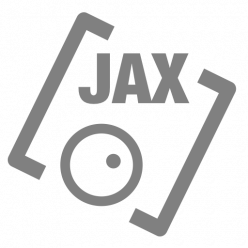From prototyping to release…

It’s obviously completely without any importance and/or interest what we are publishing.
The above picture is the 3D prototype, made with a 3D Modelling program. The below picture is the model loaded into the app with Apples frameworks. We think, the result is nice and can be shown.

Our new user interfaces for the JAX ONE series are all based on real 3D environments and will render all graphics in realtime. Rather than using stitched still images captured from parallel camera projection, the 3D views allow any projection and movement of lights and so on, although this may be limited for useful perspectives finally.
Because users of audio units are probably not able to navigate a 3D space with their sausage fingers precisely in conjunction with making music. Users always complained about our user interfaces, rather wanting Excel spreadsheets as user interfaces. ^^
However, we have a completely different philosophy and we always love trying out and experimenting with new solutions.
The first (closed) beta version integrates the Shifter module and the Delay module. The video demonstrates the possibilities alone with these two modules active. The entire signal flow is stereophonic!, note that the original Bode frequency shifter is basically just a mono effect, which can output 2 signals (for downshift and upshift). For the (possibly) public beta we will now integrate and connect the LFO and the Envelope Follower modules.
JAX ONE – Frequency Shifter Extended public beta (Apple TestFlight)
JAX ONE – Frequency Shifter Extended will be available as pre-order with an introduction price of 17,99 (regular price 24,99) and is available on all Apple Silicon platforms (iOS, iPadOS, macOS, visionOS).
The manual is available here :

Added a new demo vide, demonstrating the first beta version on the mac.
We actually integrated envelope follower and low frequency oscillator. We also changed the internal signal flow for better fitting to the concept. The ‚shift‘ parameter is now always bidirectional and the mixture parameter was replaced with a classic dry/wet control. We think, mixture of down- and up-scaling signals is used seldom an can be omitted.
It is possible to use LFO and Envelope at same time, which will sum bidirectional amounts of modulation and we think this solution is much more praxis oriented than the classic Bode implementation, which is more complicated to route and to handle.